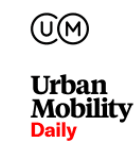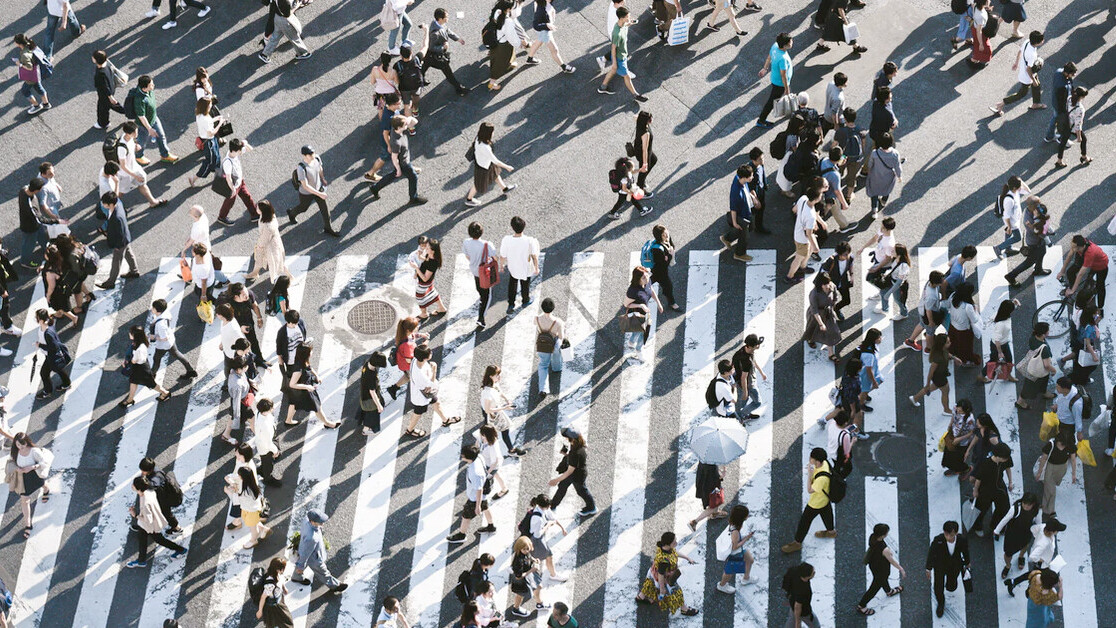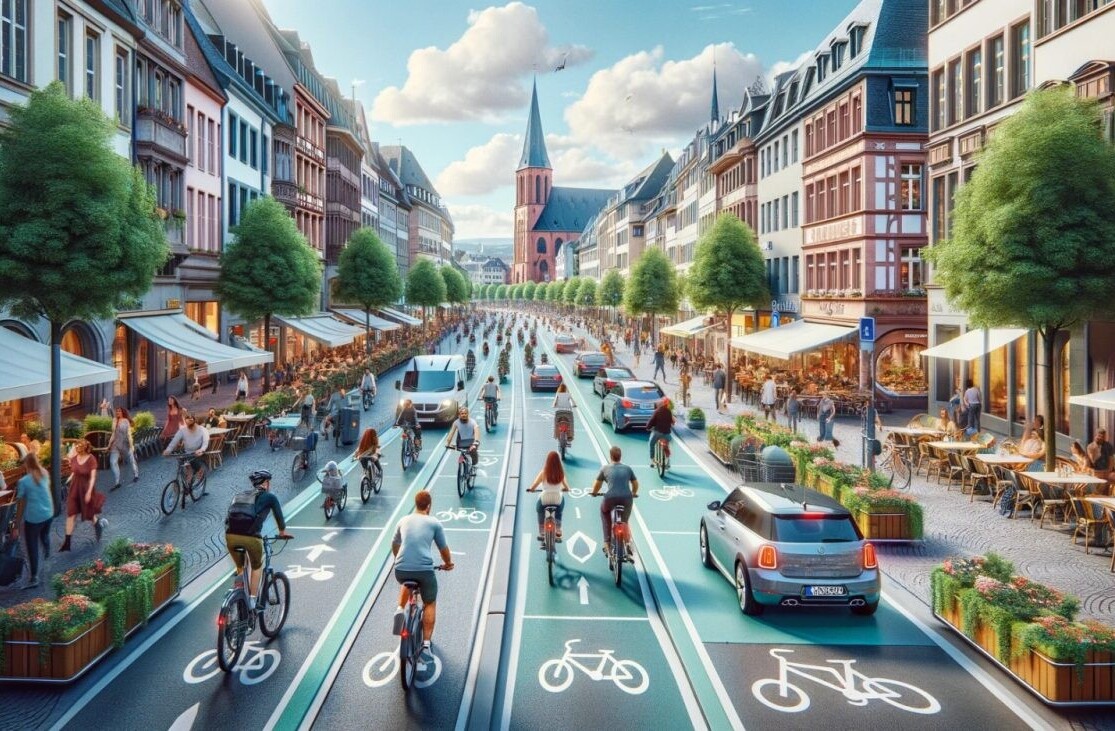There has been a lot of recent hype and attention given to ‘Mobility as a Service’ (MaaS). In January 2019 I posted on LinkedIn:
I just walked – past two days in London between multiple locations. No bus. No tube. No Uber. No bike. Thanks to a major new innovative collaboration between Google Maps and my new desert boots – called ‘Walking as a Service.’
It was a bit of fun. I’d coined a new phrase to have a dig at MaaS which was getting all the attention and yet not giving any attention to walking. The post got nearly 40,000 views, hundreds of likes, and many comments. Perhaps there was something in this?! Over the months that followed, I pursued the idea and it grew to become the focus of a paper that I’m delighted to say has now been published. Thanks to the support from Mott MacDonald, you don’t need to have a subscription to the journal to view the paper – it’s freely available.
The paper was written before the global pandemic and the lockdown prompted which brought about sharp reductions in motorized travelwhile thrusting active travel into the spotlight. As hopes are pinned on a ‘green recovery’ from COVID-19, the importance of walking as part of the future of mobility is greater than ever.
[Read: How coronavirus is reshaping the mobility industry, from EVs to supply chains]
In this article, I offer a summary of the published paper.
Paper highlights
- Walking has substantial unrealized potential as a mode for short journeys
- Walking as a Service (WaaS) represents a contributor to realizing this potential
- WaaS can resolve the spatial and temporal cognition challenges of walking
- WaaS has a business model founded upon selling geography not mobility
- WaaS could support sustainability and profitability with a Circle of Virtue
Too dull to bother with?
Type ‘pedestrian’ into Google and it informs you that as an adjective it means “lacking inspiration or excitement; dull”. Perhaps this is why walking has not been center-stage (or even on the edge of the limelight) when it comes to talking of ‘smart mobility’ – an obsession with what technological possibility might be able to offer to the transport sector. Why would policymakers and tech bros want to get excited by walking when they are investing in what they call innovation, seduced by the dollar signs that big brand pundits promise will follow? Walking is low tech and doesn’t make money, right? Wrong.
Walking as a Service
Walking can be low tech of course – nearly everyone can do it, and it’s free. However, many people don’t walk, in part because they can’t navigate or judge distance (spatial cognition) and can’t judge time (temporal cognition). Silicon Valley – the home of technological innovation – has responded to this in the form of Google Maps Navigation for pedestrians (smartphone sat nav for those on foot). It puts confidence to get where you want to go on foot in the palm of your hand. But it also puts businesses ‘on the map’ to be discovered by prospective customers. And it generates income for Google.
MaaS and autonomous vehicles have had excessive recent attention when it comes to future mobility. For the most part they remain an aspiration – an invention rather than, as yet, a true innovation. WaaS is different – it is here now and already supporting and influencing mobility across the world. Whenever I’ve asked for a show of hands at a conference for people who use Google Maps to make a walking trip, the majority of hands have gone up.
I should say I’m not suggesting Google Maps is the only way of navigating on foot – but its use is widespread and hence became the focus of attention in my paper.
Walking as a mode
Could WaaS be partly responsible for a walking renaissance? The following summary points can be made about walking as a mode:
- Walking in the UK remains a significant mode but has seen a decline over several years in the face of a car-dependent society, compounded by a relative lack of interest from (transport) planners and policymakers. It has been seen (implicitly) as an inferior mode.
- A recent and seemingly significant upturn in walking has been observed (in line with an increase in trip rate overall and trip rate for short trips under one mile – see below). Between 2015 and 2018 in England the average number of walking trips under 1 mile per person per year (according to the National Travel Survey) increased by 30% (accounting in 2018 for 79% of all trips under 1 mile). This may or may not be a sign of things to come and is not yet explained.
- A considerable proportion of journeys in urban environments are within reach of walking and indeed many individuals consider that such trips are walkable. There is unrealized potential.
- Research and advocacy exist concerning the importance of improving the walkability of environments as an enabler of, and stimulus for, more walking.
- The digital age has unlocked considerable opportunity to address matters of spatial and temporal cognition in the form of journey planning and navigation support – available on mobile devices.
- In spite of an apparent disconnection in terms of their coverage in the literature, improved walkability and wayfinding together could help realize walking’s full potential to contribute to public health and tackling climate change.
A win-win-win situation?
There appear to be (at least) three winners from the Google Maps Navigation innovation:
- The pedestrian is afforded free access to a versatile (and, perhaps increasingly, intuitive) service to support them on their walk trips and indeed in terms of searching for and locating amenities and services.
- The proprietors/occupiers of premises and facilities are more easily discoverable by people (and their custom) that they seek to attract to their locations. By having their names included on buildings in the mapping display to pedestrians, they are enhancing landmark detail that in turn benefits the pedestrian (regardless of whether the premises concerned is the pedestrian’s destination). Through ‘Google My Business’, businesses can, for free at present, set up a profile that will appear in Google Search and Maps results and on Google Maps.
- Google is benefitting from both of the above through the data it gathers (from users who make it available knowingly or not), the targeting of information it can provide, and the fees it can charge for advertising.
As the saying goes, ‘if a product is free then you are the product.’ The power of geography is a lucrative business and one for which Google now has a mature, complex, and continually developing ecosystem.
Whether or not this win-win is felt for pedestrians, businesses, and Google, and will continue to be felt by all parties affected remains to be seen. There may be unanticipated consequences (positive and negative) as well as limitations – under Google’s control – to the benefits different parties can enjoy.
MaaS versus WaaS
MaaS concerns providing travelers with convenient access to a mobility system beyond the private car – accessible through a smartphone app that addresses planning, booking, and payment for travel across modes. It’s the app-based service that is often seen as the defining (new) feature of MaaS – an intermediary between the traveler and the mobility services available.
Walking does not necessarily feature in MaaS as a travel option in its own right as an alternative to other means of reaching a destination (for journeys within walkable distance). It may be that one reason for this is that it detracts from selling mobility to consumers and thereby supporting a revenue stream to justify the investment made by an intermediary and its supporting mobility service providers.
In the paper itself, I contrast in more detail WaaS with MaaS. However, an important observation emerges regarding a stark contrast in the business models between the two:
- MaaS is founded upon selling access to mobility
- WaaS is founded upon selling access to geography and access to consumers
The latter business model seems to be making more headway than the former. Indeed MaaS providers (such as Uber) are having to pay to access Google’s geographic ecosystem in order to provide their services.
Circle of virtue
Both MaaS and WaaS (unless publicly funded or subsidized) have financial sustainability to consider which could be at odds with fulfilling the sustainable transport objectives of public authorities. WaaS has the prospect of providing a ‘sweet spot’ where Walking aimed at Sustainability as well as Walking aimed at Shareholders can be successfully pursued. We must guard against innovations in mobility that could – for profit or in the supposed interests of consumer convenience – see walkable trips being unduly undertaken by other means.
The prospect of a symbiosis between sustainability and shareholders exists in relation to WaaS which it can be suggested could point towards the creation of a WaaS Circle of Virtue as shown below.

- Public (and private sector) investment in walkability that focuses upon improving the attractiveness of the public realm, in terms of the infrastructure for walking but also the ambiance of the environment for walking, helps address the barriers to walking.
- Improvement in navigability that addresses the key questions of ‘how (easily) can I find my way?’, ‘how far is it?’ and ‘how long will it take?’ provides a further enabling function for walking’s viability and attractiveness.
- These hold the prospect of leading to an increase in walking.
- The WaaS business model benefits from an increase in walking, with the prospect of then connecting more consumers to businesses – with the opportunity for an increase in profit (for the intermediary (Google) and for the businesses (featuring (as landmarks) in the Google ecosystem).
- This leads to growth in the local economy that enables further investment in walkability.
So let’s put our best foot forward in these times of change and place walking at the heart of future mobility that supports society.
The Urban Mobility Daily is the content site of the Urban Mobility Company, a Paris-based company which is moving the business of mobility forward through physical and virtual events and services. Join their community of 10K+ global mobility professionals by signing up for the Urban Mobility Weekly newsletter. Read the original article here and follow them on Linkedin and Twitter.

Get the TNW newsletter
Get the most important tech news in your inbox each week.







